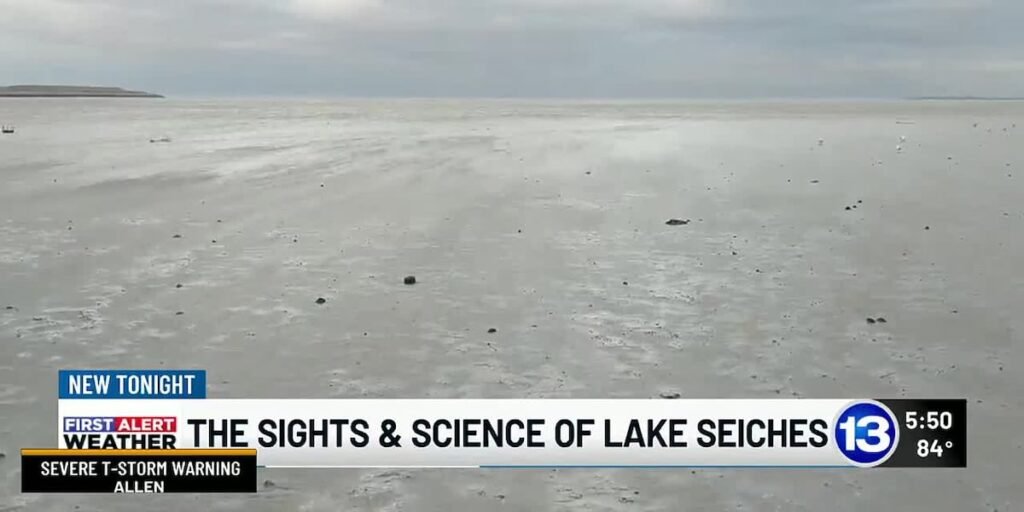TOLEDO, Ohio (WTVG) – A seiche in Lake Erie happens when strong winds from a powerful low either push all the water away from the shoreline or up onto it.
Seiches can happen in any of the Great Lakes, but they’re much more dramatic in Lake Erie because of its unique shape and shallow depth.
“The lake is much like a bathtub where it just rocks back and forth and there’s fluctuations going on all the time,” explained Dr. Todd Crail. He’s a Distinguished University Lecturer at the University of Toledo in the Department of Environmental Sciences. “Lake Erie is extremely interesting because the shallowness of the lake can drain a significant amount of the western basin.”
On the other hand, seiches can lead to flooding when the water pushes inland with a northeast wind. The average lake level is typically higher during the spring and summer months when we historically get more rain, and it drops in the fall and winter as precipitation usually decreases.
“The lake goes through a decadal high and low. It goes back and forth based on how much precipitation and evaporation is happening,” added Dr. Crail. “When it’s really low or really high, when a low comes in and pushes against the water, if it was already really high and it’s pushing it into shore, you’re flooded. And if it was already really low and it’s pushing the water away, your boat is sitting in the mud.”
Seiches in either direction can happen any time of year when conditions are right, but the big rises are more likely in the spring, and the big drops are more likely in the fall. The next time a large seiche is forecast to drop the lake level, it might be worth a drive to the lakeshore.
“It’s something that you don’t get to see many places in the world. It’s just really interesting to watch such a big body of water disappear so quickly,” Dr. Crail told us.
Seiches can be cool to watch, but also dangerous. Don’t let the lack of water lure you too far out because remember that water will eventually come rushing back when winds subside or change direction.
“To do it safely, don’t get more than 100 yards away from shore,” said Dr. Crail.
Bayshore in Oregon, Luna Pier in Michigan, and the Maumee River itself can be great spots to view the exposed lakebed when a seiche happens. And in case you were wondering, most fish will simply move with the lake, but some mussels and smaller fish can become stranded until the water returns.
Latest Local News | First Alert Weather | Crime | National | 13abc Originals
Copyright 2025 WTVG. All rights reserved.








